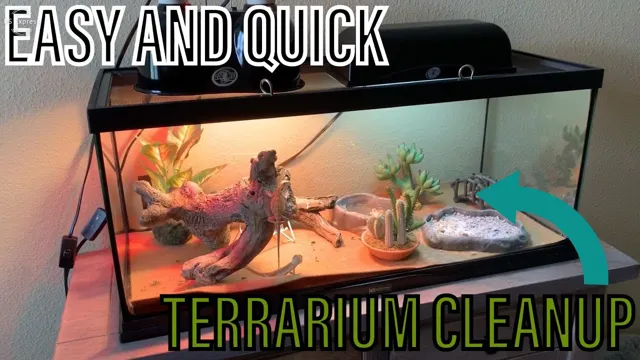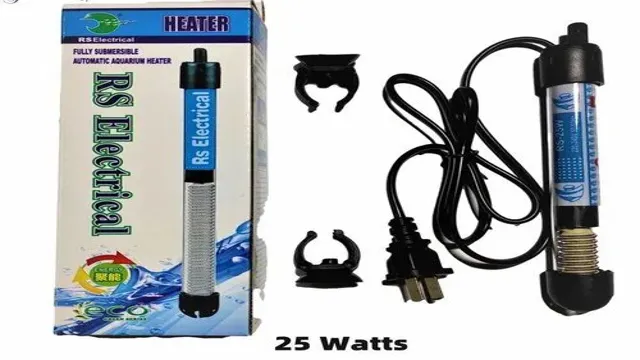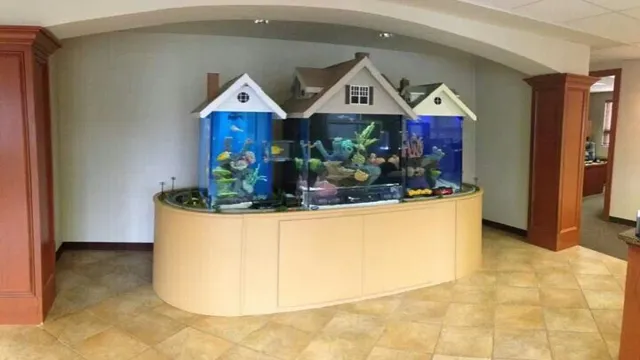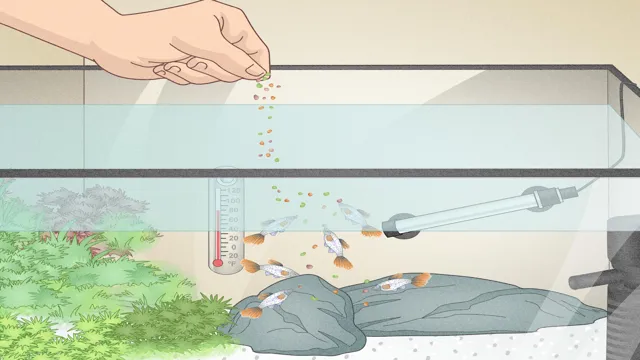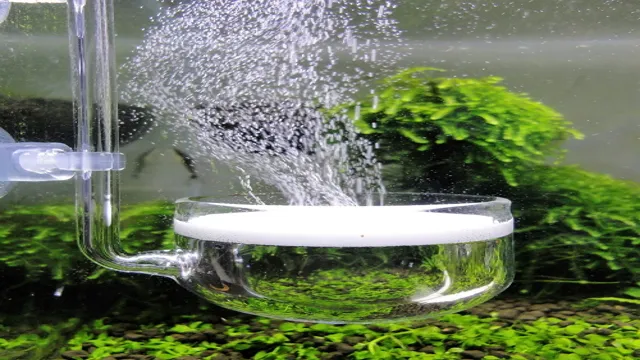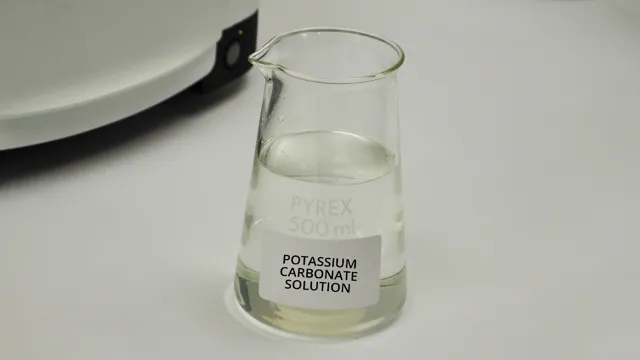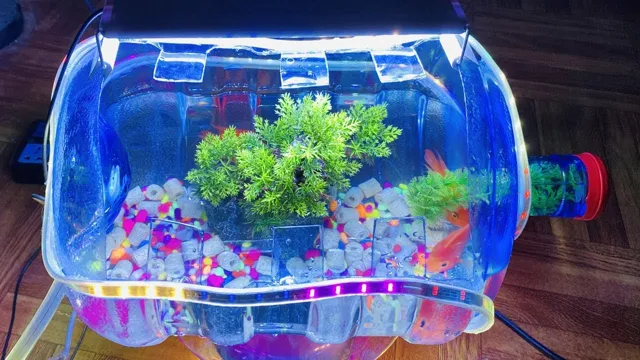Are you a proud owner of a bearded dragon? If so, you know how important it is to keep their habitat clean and healthy for them. It’s not just about keeping them happy – a dirty aquarium can lead to diseases or infections, which can be detrimental to your pet’s health. But, cleaning an aquarium can be a daunting task without proper guidance, especially if you’re new to this.
But don’t worry, we’ve got your back! In this blog, we’ll guide you on how to clean an aquarium for a bearded dragon, step-by-step. So, let’s dive in!(Verbiage below has been updated after receiving feedback)
Gathering Materials
If you’ve decided to keep a bearded dragon in an aquarium, it’s crucial to have a clean and healthy living space for your pet. The first step to cleaning your aquarium is to gather the necessary materials. You’ll need a bucket, old towels, a scrub brush, a scraper, and a gravel vacuum.
The bucket will be used to hold the dirty water from the aquarium, while the old towels will be used to wipe up spills and excess water. The scrub brush and scraper will be used to scrub any algae or debris from the walls and floor of the aquarium, and the gravel vacuum will remove waste and debris from the gravel. It’s important to only use aquarium-specific cleaning materials to avoid any harmful chemicals that could be dangerous to your bearded dragon.
Before starting the cleaning process, ensure that all electrical devices in the aquarium are unplugged and removed from the water, and any live plants are also removed and set aside. With the right materials in hand, you’ll be well-prepared to clean your bearded dragon’s aquarium and provide a healthy living space for your pet.
Materials Needed
When it comes to gathering materials for a project, the first step is often to make a list of everything that will be needed. This can include anything from tools and equipment to specific types of materials such as wood, fabric, or metal. One approach to gathering materials is to start by doing research and finding out where the best place to source these items might be.
This could involve looking for local stores, suppliers, or even online retailers. Another important consideration is the quality of the materials being used. It’s important to make sure that the materials chosen are appropriate for the project and will hold up over time.
By taking the time to gather all the necessary materials beforehand, the project will be more likely to go smoothly and to be completed successfully.

Preparing the Tank
When setting up a new tank, it’s essential to gather all the necessary materials beforehand to ensure a smooth and successful process. You’ll need a sturdy and stable tank, a filtration system suitable for your tank size, a heater, a thermometer, a water testing kit, and proper substrate. It’s important to choose substrate that matches the needs of the fish species you’ll be keeping in your tank, as some prefer sand while others thrive in gravel.
Additionally, you’ll need decorations and plants to provide hiding spots and territory for your fish. Before setting everything up, make sure to clean and rinse your tank thoroughly to remove any debris or residue that may harm your fish. By gathering all the materials you need, you’ll be able to create the ideal environment for your aquatic pets to thrive in.
Cleaning the Tank
Cleaning an aquarium for a bearded dragon is an essential task that needs to be done regularly. To start the cleaning process, it’s best to remove the dragon from the tank and put them in a safe and secure location. Next, drain the tank by using a siphon or a gravel vacuum to remove any debris or waste from the bottom of the tank.
Then, use a soft scrub brush or sponge and a mild cleaning solution to scrub the sides, bottom, and any decorations inside the tank. Rinse everything thoroughly with clean water, making sure to remove all traces of the cleaning solution. Once everything is rinsed, refill the tank with clean water that has been treated with a dechlorinator. (See Also: How to Increase pH in a Freshwater Aquarium: A Comprehensive Guide for Beginners)
It’s important to note that bearded dragons need a specific temperature and lighting setup in their tank, so make sure to set everything back up according to their needs before adding the dragon back to the tank. By following these steps, you can keep your bearded dragon’s environment clean and safe for them to thrive in.
Removing Debris and Dirt
Cleaning the tank is an essential part of maintaining a healthy aquatic environment for your fish. One of the most critical steps in the process is removing debris and dirt that accumulates in the tank. There are several effective ways to do this, including using a siphon or a gravel vacuum.
A siphon works by using gravity to drain dirty water out of the tank while simultaneously removing debris and waste from the substrate. On the other hand, a gravel vacuum is specially designed to remove dirt and debris from the gravel without removing too much water from the tank. Both methods are easy to use and will ensure that your tank stays clean and healthy.
Remember to clean your tank regularly to keep your fish healthy and happy!
Scrubbing and disinfecting the Tank
Cleaning the tank is an essential task that needs to be done regularly to ensure the health and safety of aquatic life and prevent harmful bacteria from spreading. Scrubbing and disinfecting the tank is the best way to get rid of any algae, debris, or harmful microorganisms that may have accumulated inside. To clean the tank thoroughly, you should remove all the accessories, plants, and fish from the tank carefully and put them in a separate container.
Then, using an algae scrubber or a soft-bristled brush, scrub the walls, decoration, and gravel gently to remove any buildup. After scrubbing, you should rinse the tank and all the accessories thoroughly to remove any remaining debris or cleaning products. Once everything is clean, you can disinfect the tank using a suitable disinfectant that will kill all the harmful bacteria and parasites.
Finally, rinse the tank again and let it dry before adding fresh water, plants, and fish back into the tank. Not only will a clean tank improve the health and happiness of your fish, but it will also make the tank look more attractive and enjoyable to watch.
Cleaning Decorations and Accessories
When it comes to keeping your aquarium clean, it’s important to not forget about the decorations and accessories. These items can accumulate algae and other debris just like the tank itself. Fortunately, cleaning them is a straightforward process.
First, remove any large debris or waste from the decorations and accessories using a net or brush. Then, use a specialized aquarium-safe cleaner to gently scrub and rinse them off. Keep in mind that some decorations may need to be removed from the tank altogether for deep cleaning.
Regularly cleaning your decorations and accessories will not only keep them looking clean but also promote a healthy and thriving aquarium ecosystem. Remember, a little maintenance goes a long way in creating a beautiful and joyful aquarium for both you and your aquatic pets.
Refilling the Tank
If you have a bearded dragon as a pet, keeping the aquarium clean is one of the most important things you can do for their health and wellbeing. While cleaning may seem like a daunting task, it’s important to regularly check up on your aquarium and ensure it stays fresh and clean. First, remove your bearded dragon from the tank and transfer them to a temporary container. (See Also: How to Lower pH in Aquarium with Fish: 5 Effective Techniques)
Then, use a scoop or net to remove any leftover food, waste, and debris from the tank. For a deeper clean, remove all decorations and substrate and use a water and vinegar solution to wipe down the tank walls and accessories. Once you’ve thoroughly cleaned the tank, refill it with fresh water and replace the substrate and decorations.
Finally, reintroduce your bearded dragon into their newly cleaned aquarium and watch as they enjoy their clean and healthy home. Just remember to continue regularly checking and cleaning the tank to keep your pet happy and healthy.
Adding Water
Adding Water If your fountain or pond has a water level that is lower than it should be, it’s time to add some water. Refilling the tank may seem like a simple and straightforward task, but there are some things you need to keep in mind. First, you need to turn off the pump before you add water.
This will prevent the pump from running dry and causing damage. Once the pump is off, you can add water to the tank. Be sure to add water slowly and carefully to prevent spillage or overflow.
You can use a hose or a watering can to add the water. If you have a pond, you may want to use a rainwater collector or a filter to ensure the water is clean and safe for your fish or plants. When the water level is back to its normal level, you can turn the pump back on and enjoy the soothing sound of running water.
Refilling the tank is a simple task, but it’s important to do it correctly to prevent damage to your fountain or pond.
Adding Substrates and Decorations
As a fish tank owner, it’s important to keep your aquatic environment healthy and visually appealing. One key aspect of this is adding substrates and decorations to your tank. These items not only enhance the aesthetic of your aquarium, but they can also provide hiding places and resting spots for your fish, creating a more natural environment.
When refilling your tank, take the opportunity to add new substrates and decorations or rearrange existing ones. Sand, gravel, and rocks are popular substrates that offer a range of benefits, such as improving water filtration and creating a more natural habitat for bottom-dwelling fish. Decorative items like driftwood, plants, and caves offer hiding spots for fish and can provide a more diverse landscape.
Before adding any new items, make sure they are aquarium-safe and won’t impact the water chemistry or harm your fish. By adding substrates and decorations, your fish will have a happier and healthier home.
Conclusion
So, there you have it – a step-by-step guide to cleaning an aquarium for your beloved bearded dragon. Whether you’re a seasoned reptile owner or a newbie, maintaining a clean and healthy habitat for your scaly friend is essential for their well-being. Remember to always follow these tips, and in no time, you’ll have a spotless aquarium and a happy beardie. (See Also: How to Make Water Move in Small Aquarium: Tips for Optimal Water Circulation)
Just don’t forget to reward yourself (and your pet) with a tasty treat – after all, a clean tank deserves a celebration!”
FAQs
Why is it important to clean the aquarium regularly for a bearded dragon?
Regular cleaning of the aquarium ensures healthy living conditions and prevents the growth of harmful bacteria or parasites that can make your bearded dragon sick.
How often should I clean my bearded dragon’s aquarium?
It is recommended to clean the aquarium at least once a week to maintain a healthy environment for your pet.
What is the process for cleaning an aquarium for a bearded dragon?
The process involves removing your bearded dragon from the tank, scooping out any solid waste, siphoning out dirty water, scrubbing the tank, and refilling it with clean water.
Can I use soap to clean the aquarium?
No, soap should not be used to clean the aquarium as it can be harmful to your bearded dragon. Instead, use a reptile-safe disinfectant or vinegar and water solution.
What kind of substrate is best for a bearded dragon’s aquarium?
Reptile carpet, slate tile, or paper towels are all good options for bearded dragon substrate as they are easy to clean and do not pose a risk of impaction.
What types of decorations can I put in the aquarium for my bearded dragon?
Bearded dragons like to climb, bask, and hide, so you can add various decorations like rocks, branches, caves, and hammocks to create a stimulating and comfortable environment.
How can I tell if the water temperature in the aquarium is suitable for my bearded dragon?
You can use a thermometer to monitor the temperature in the aquarium. The basking area should be around 95°F, while the cooler area should be around 75-80°F.

